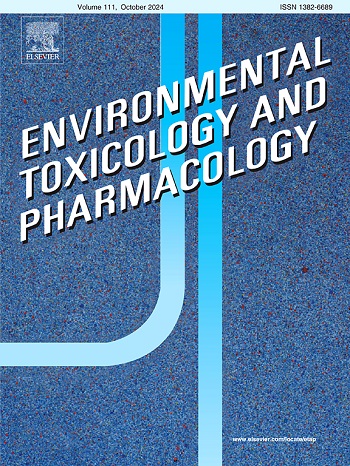Effect of an insecticide, fungicide and plant growth regulator and their mixture on the survival of the springtail Folsomia candida and the potential reduction of toxicity by vitamins
IF 4.2
3区 环境科学与生态学
Q2 ENVIRONMENTAL SCIENCES
引用次数: 0
Abstract
A pesticide-free model soil was pretreated with field-realistic doses/applications of the insecticide, Biscaya 240 OD; the fungicide Tilmor; the growth regulator, Atonik and their mixture. Because Folsomia candida is eyeless, unpigmented, avoids light, and prefers dark, wet and cold conditions, we grew and tested it in the dark and at 18°C. Survival of springtails added to soil at 50 % moisture was assessed after 28 days. The experiments were repeated three times in order to confirm the validity of the test and results. The mixture decreased the survival most significantly. Bayesian statistics showed that pesticide treatment had a greater effect than repeating the experiment. Further tests revealed that the negative effect of the mixture on springtail survival was effectively suppressed by the application of biotin (vitamin B7), whereas riboflavin (vitamin B2) had little effect. Vitamins can reduce the toxicity of agrochemicals in the soil through potential effects on soil biological activity.
杀虫剂、杀真菌剂和植物生长调节剂及其混合物对念珠绣春蜱存活的影响以及维生素的潜在减毒作用。
在不含杀虫剂的模型土壤中预处理了田间实际剂量/应用的杀虫剂 Biscaya 240 OD、杀真菌剂 Tilmor、生长调节剂 Atonik 及其混合物。由于 Folsomia candida 无眼、无色素、避光,喜欢黑暗、潮湿和寒冷的环境,因此我们在黑暗和 18°C 的环境中对其进行了生长和测试。28 天后,我们对添加到含水量为 50%的土壤中的春尾虫的存活率进行了评估。实验重复了三次,以确认测试和结果的有效性。混合物对存活率的降低最为明显。贝叶斯统计表明,杀虫剂处理比重复实验的效果更大。进一步的测试表明,施用生物素(维生素 B7)可有效抑制混合物对春尾存活率的负面影响,而核黄素(维生素 B2)的作用则微乎其微。维生素可以通过对土壤生物活性的潜在影响来降低土壤中农用化学品的毒性。
本文章由计算机程序翻译,如有差异,请以英文原文为准。
求助全文
约1分钟内获得全文
求助全文
来源期刊
CiteScore
7.00
自引率
4.70%
发文量
185
审稿时长
34 days
期刊介绍:
Environmental Toxicology and Pharmacology publishes the results of studies concerning toxic and pharmacological effects of (human and veterinary) drugs and of environmental contaminants in animals and man.
Areas of special interest are: molecular mechanisms of toxicity, biotransformation and toxicokinetics (including toxicokinetic modelling), molecular, biochemical and physiological mechanisms explaining differences in sensitivity between species and individuals, the characterisation of pathophysiological models and mechanisms involved in the development of effects and the identification of biological markers that can be used to study exposure and effects in man and animals.
In addition to full length papers, short communications, full-length reviews and mini-reviews, Environmental Toxicology and Pharmacology will publish in depth assessments of special problem areas. The latter publications may exceed the length of a full length paper three to fourfold. A basic requirement is that the assessments are made under the auspices of international groups of leading experts in the fields concerned. The information examined may either consist of data that were already published, or of new data that were obtained within the framework of collaborative research programmes. Provision is also made for the acceptance of minireviews on (classes of) compounds, toxicities or mechanisms, debating recent advances in rapidly developing fields that fall within the scope of the journal.

 求助内容:
求助内容: 应助结果提醒方式:
应助结果提醒方式:


